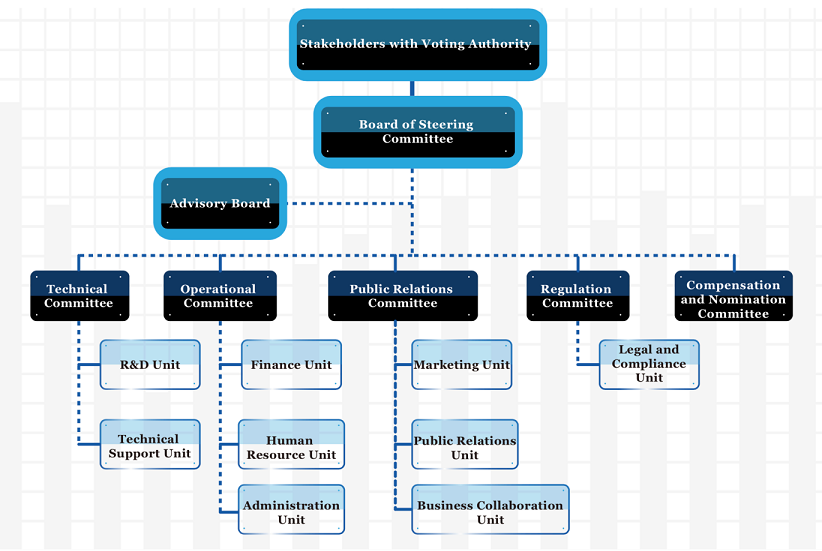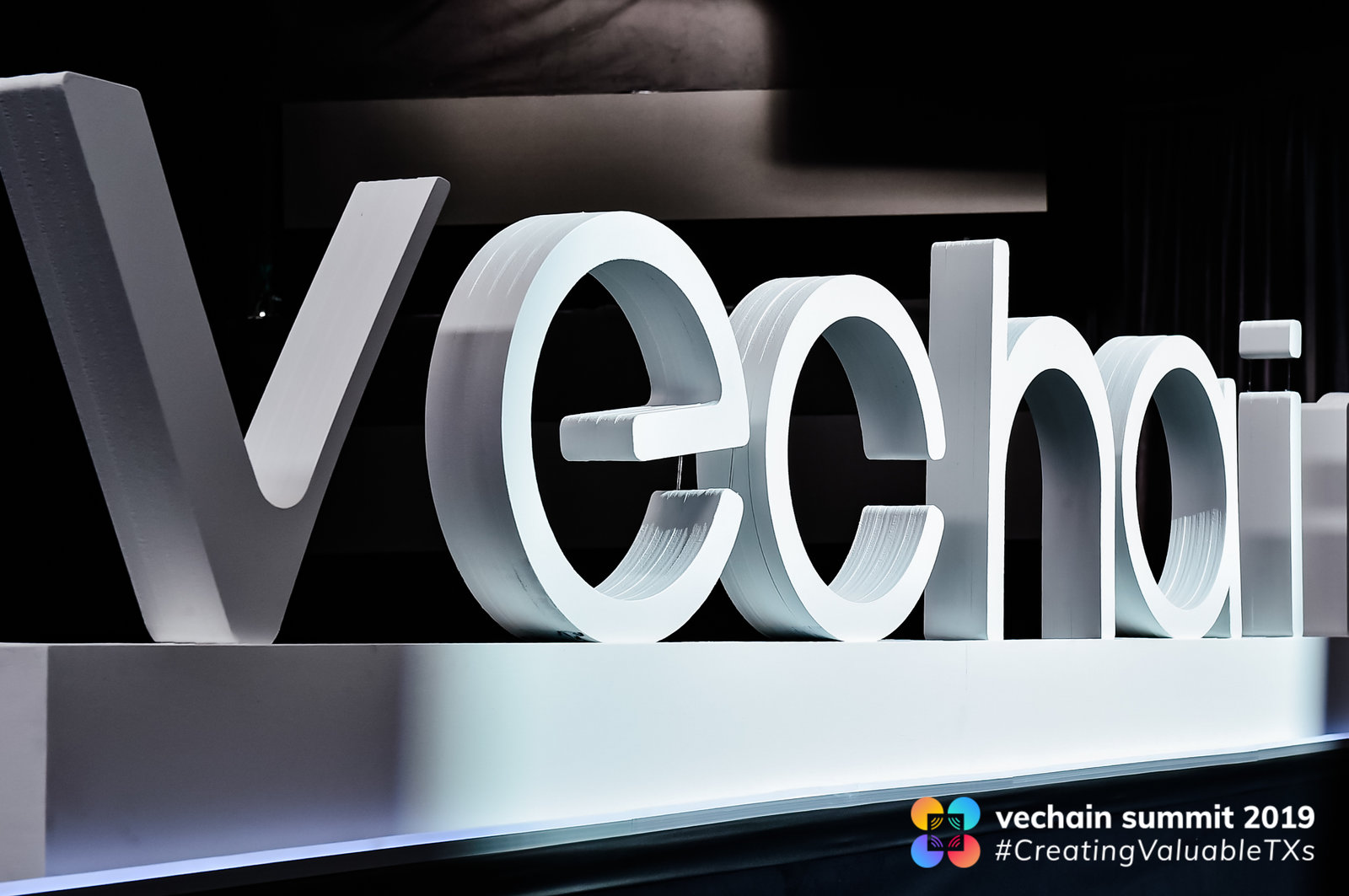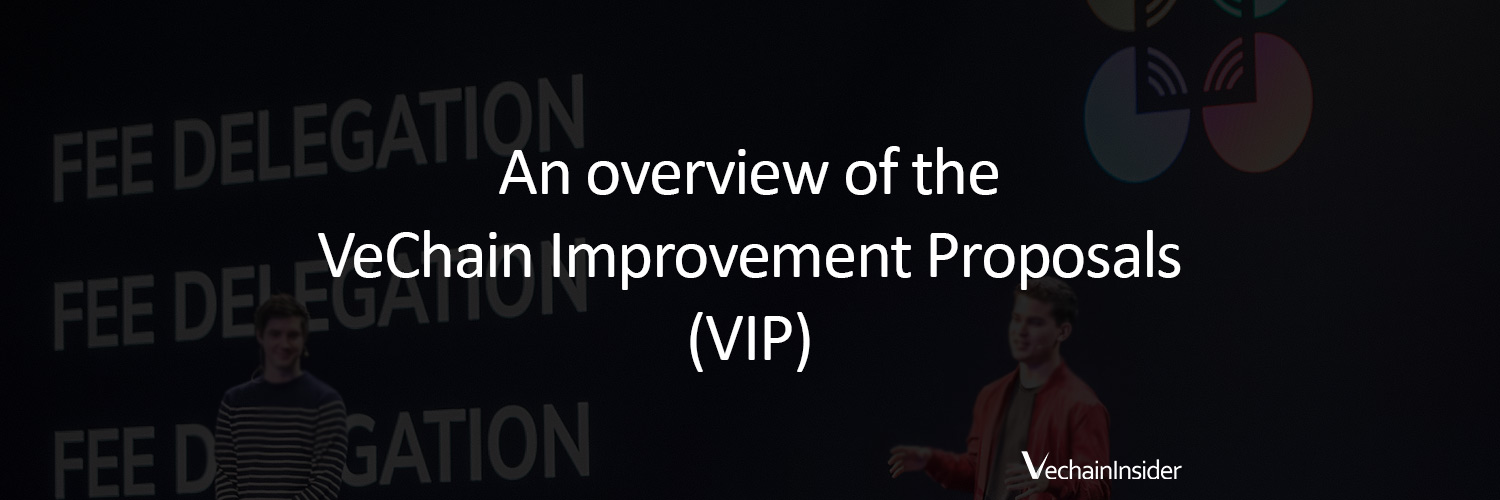Vechain is the world’s leading Enterprise-focused dApp platform run by the Vechain Foundation.
The mission of the Vechain Foundation is: “Building a trust-free and distributed business ecosystem platform to enable transparent information flow, efficient collaboration, and high-speed value transfers.”
In order to make this happen Vechain started its journey by doing a comprehensive study of existing blockchain platforms and having countless discussions with industry leaders as well as enterprises looking to use blockchain technology.
The problems in current blockchain solutions Vechain aims to solve
During this study, four major problem area’s were found that currently prevent mass adaption of blockchain technology:
1. Lack of a functional governance model
Although decentralization is the cornerstone of blockchain technology, a completely decentralized consensus model causes scalability issues. Bitcoin can handle up to 4 transactions per seconds, while Ethereum is able to handle 20 transactions per second. Compare this to the average 1700 transactions per second Visa is handling and you can see that both are not suited for mass scale adoption in their current states.
This same decentralization also prevents easy to reach consensus on protocol changes or upgrades. The results of this can be seen with Bitcoin, that has had various hard forks because no consensus could be reached on “how to move forward”.
2. The economic model
The economic model of most existing public blockchains (in)directly links the usage costs to the valuation of the coin. The result is a paradox: the greater the use of a blockchain, the higher the value of its coin and the higher the fee is to create a transaction on the blockchain.
Another result is that with strong price fluctuations, the price to use the blockchain also fluctuates. This is an undesirable situation for enterprises that want to predict how much it is going to cost to use blockchain technology.
3. Combining technologies
The current blockchain world lacks a connection between the technology and real business use cases. There needs to be an infrastructure of services for business developers to use.
4. Comply with regulation and changes
Blockchain technology is closely followed by regulators and governments, it is key that the system developed has the capacity to comply with any regulation or changes to those regulations in the future.
Vechain has been able to design a blockchain based ecosystem that solves all of these problems, the VechainThor blockchain.
In the next sections, we will dive into the various aspects of the VechainThor blockchain.
1. The Vechain Governance Model
Vechain believes that both centralized and decentralized governance models have defects. That’s why a governance structure was developed that combines the best elements of both centralized as well as decentralized models.
The core principles of this model are visibility, inclusiveness, transparency, flexibility and efficiency.
1.1 The Vechain Foundation
The Vechain foundation was founded in July 2017 in Singapore as a non-profit organization. The foundation acts as the governing body that is responsible for decision making as well as the growth of the Vechain platform.

1.1.1 Stakeholders with voting Authority
The stakeholders of the Vechain Foundation are the owners of VET. The voting authority each stakeholder has depends on their role and VET holdings as seen in the following table. Stakeholders vote on important decisions like the election of a new Board Member, or modifications to the consensus mechanism or technical parameters.
Stakeholders vote on important decisions like the election of a new Board Member, or modifications to the consensus mechanism or technical parameters.
1.1.2 The board of Steering Committee
The board of Steering Committee is the governing body of the Vechain foundation. It represents the interest of all of Vechain’s stakeholders. The Steering Committee defines the strategy of the Foundation and selects the team leads of the various operational teams. The Committee consists of 7 members:
- Chun Yin Cheung – partner in PwC China’s Risk Assurance. Extensive experience in security assessments and regulatory compliance related advice.
- George Kang – CEO of DNV GL Greater China Region. Expert with strategic focus in the food & beverage, healthcare, and automotive industries.
- Jay Zhang – CFO and co-founder of Vechain
- Prof. Margret Rui Zhu – Researcher on the subject of finance and corporate risk management for the University of Hong Kong.
- Peter Zhou – Chief Scientist of Vechain.
- Renato Grottola – global Digital Transformation Director at DNV GL.
- Sunny Lu – CEO and co-founder of Vechain.
1.1.2 The Advisory Board
The role of the advisory board is to give advice to the steering committee and help them with the design, implementation, and vision of Vechain. The steering committee currently consists of 5 members:
- Bo Shen – co-founder of Bitshares, Qtum, and Zcash.
- Daniel Kelman – represented creditors who lost funds in the MtGox hack. Next to this Daniel is a co-founder of the BitOcean crypto exchange.
- James Gong – CEO of ChainB, the most influential crypto media company in China.
- Roland Sun – Partner in the Chinese law firm Borad&Bright, specialized in crypto and banking law.
- Nan Ning – CEO of BitOcean, a Japanese crypto exchange.
1.1.3 The Vechain team
The Vechain team currently consist of 90 full-time employee’s of which 50 are blockchain developers, spread across 5 different offices in Asia and Europe.
The team is led by Sunny Lu who has over 13 years of experience leading IT teams, before joining Vechain he was the CIO of Louis Vuitton China. Jay Zhang is the CFO and has over 14 years of experience working for both Deloitte and PwC as a senior manager. The COO is Kevin Feng, who has over 12 years of consulting experience in the IT sector thanks to his previous job at PwC China. JianLiang Gu is the CTO, he has a masters degree in cybernetics and over 16 years of experience in developing software and hardware. The Vechain team is expected to hire an additional 100+ employee’s in 2018.
You can read more about the Vechain team here.
1.2 The blockchain consensus model
Vechain uses a Proof-Of-Authority blockchain consensus model. Transactions are validated by a total of 101 nodes that have been selected by the Vechain Foundation based on KYC and a minimum amount of required Vechain.
The main benefits compared to Proof-Of-Work (currently used by Bitcoin and Ethereum) and Proof-Of-Stake (used in the future by Ethereum) are:
- faster transaction speed and higher transaction capacity
- system stability independent of the number of nodes.
- low requirements of computational power and thus much more energy friendly.
You can read more about Vechain’s consensus model here.
2. The economic model
The economic model plays an important role in creating a stable platform that is beneficial for all stakeholders.
You can read more about Vechain’s two coin economy here.













I’m still learning from you, as I’m trying to reach my goals. I absolutely love reading all that is written on your site.Keep the tips coming. I liked it!
you have a great blog here! would you like to make some invite posts on my blog?
Hi there, just became alert to your blog through Google, and found that it is really informative. I’m going to watch out for brussels. I’ll be grateful if you continue this in future. Numerous people will be benefited from your writing. Cheers!
You have brought up a very great points, thankyou for the post.
I am typically to blogging and i actually respect your content. The article has actually peaks my interest. I am going to bookmark your web site and preserve checking for new information.